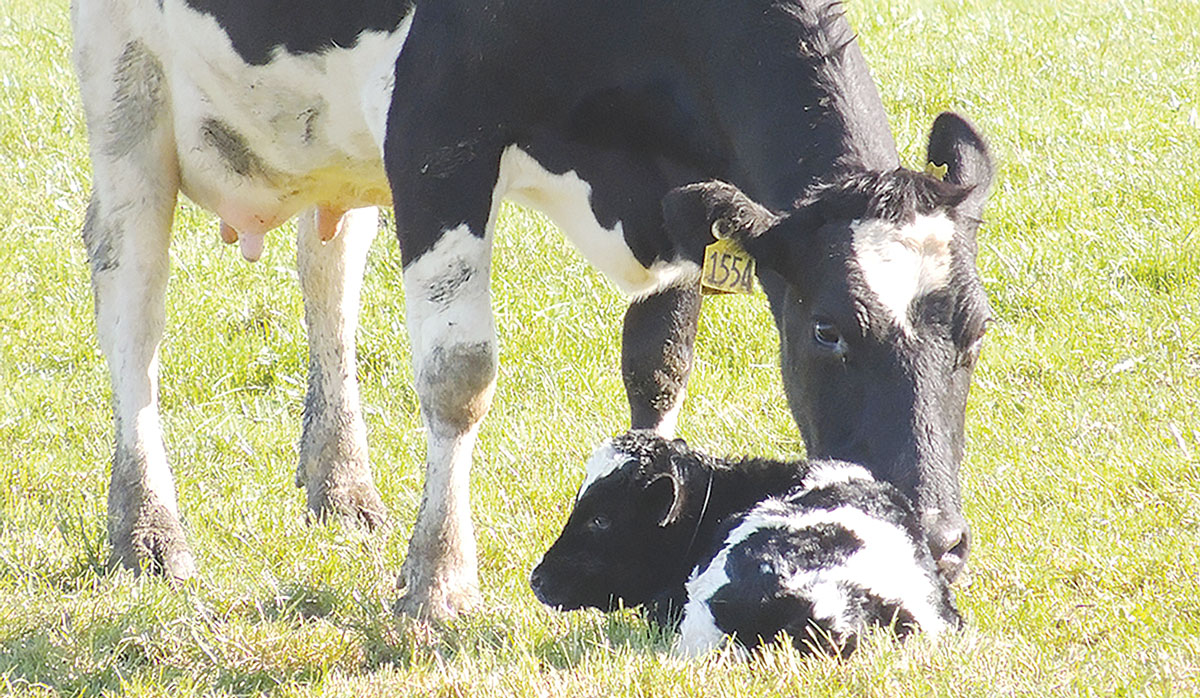Dairy sector profit still on the table, but margin gap tightens
DairyNZ’s latest Econ Tracker update shows most farms will still finish the season in a positive position, although the gap has narrowed compared with early season expectations.
As calving approaches, farmers need to get their teams ready for what lies ahead in the coming months.
That's the advice from Tony Finch, DairyNZ's national engagement lead, who says calving is just starting in the north of the country and will work its way south over the coming months.
He says a key thing for farmers at this time of the year is to manage and preserve feed as best they can, manage animal health and keep up the condition score of animals prior to calving.
Finch says by and large the season has been better than some had anticipated, but he says farmers in some regions are still managing the hangover from dry autumn weather.
"This is the sting in the tail from El Nino and we still have some regions that went in with low covers and finished milking with low covers and their winter crop yields were well back. They've been having to manage body condition score, and it's challenging and it comes at a cost, because of the extra feed they have had to provide," he says.
On the upside, Finch says the frosts that would normally stunt pasture growth have in this case been a help. He says feed utilisation on the harder ground has been good. He says also the winter so far has been a bit warmer than expected, allowing what he calls "compensatory growth" or late grass growth, which has helped some farmers.
"Some regions like the West Coast had a brilliant season and some farmers are growing up to 30kgDM/day which is amazing for this time of the year.
"So overall, some winter crop yields are down in yields, but the compensatory growth and greater utilisation means that by and large the country is coping pretty well. It would seem that teams are well prepared and ready for calving and looking forward to what's in front of them - 'the havoc season' aka calving," he says.
 |
|---|
|
Calving has started north of the country and will work its way south over the coming months. |
Tough Times
Tony Finch says while things are better than some had predicted, dairy farmers are still apprehensive about the future - particularly about what the farmgate milk price might end up being.
He says while on-farm inflation has come down, it's still high, as are interest rates. He reiterates that many farmers will come into winter feeling the cost of feeding out in the dry autumn. He says while the weather has been kind so far, winter is far from over and farmers need to plan for the unexpected.
"Southland is a classic case. They had a really wet May and June and it got pretty hard down there. But it's since settled down and they've had some nice weather, but all it takes is another front and things can revert to where they were," he says.
New Zealand needs a new healthcare model to address rising rates of obesity in rural communities, with the current system leaving many patients unable to access effective treatment or long-term support, warn GPs.
Southland farmers are being urged to put safety first, following a spike in tip offs about risky handling of wind-damaged trees
Third-generation Ashburton dairy farmers TJ and Mark Stewart are no strangers to adapting and evolving.
When American retail giant Cosco came to audit Open Country Dairy’s new butter plant at the Waharoa site and give the green light to supply their American stores, they allowed themselves a week for the exercise.
Fonterra chair Peter McBride says the divestment of Mainland Group is their last significant asset sale and signals the end of structural changes.
Thirty years ago, as a young sharemilker, former Waikato farmer Snow Chubb realised he was bucking a trend when he started planting trees to provide shade for his cows, but he knew the animals would appreciate what he was doing.
President Donald Trump’s decision to impose tariffs on imports into the US is doing good things for global trade, according…
Seen a giant cheese roll rolling along Southland’s roads?